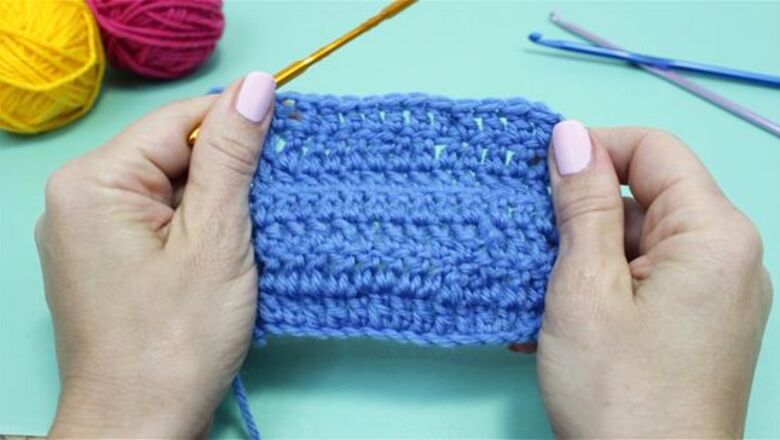
views
- Knitting requires you to use both hands and two needles. With crochet, you hold a single hook in your dominant hand.
- Choose crochet if you're a creative person who likes to go with the flow, isn't afraid of making mistakes, and wants a craft you can do on the go.
- Choose knitting if you're a logical person who has patience, strong manual dexterity, and time to commit to a more extensive project at home.
In a Nutshell
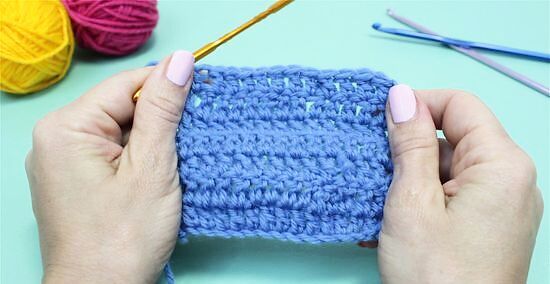
In knitting, you create fabric by forming loops with 2 long needles (1 in each hand). In contrast, crochet uses a single hook in your dominant hand to create a sturdy fabric ideal for decor and 3-dimensional objects. For most people, crochet is a little easier to pick up because it only requires you to use one hand, rather than both. Knitting produces a "V" pattern in the fabric, while crochet looks more like knots. Knitted fabric has a lot more stretch and flow than crocheted fabric.
Choosing Between Knitting and Crochet
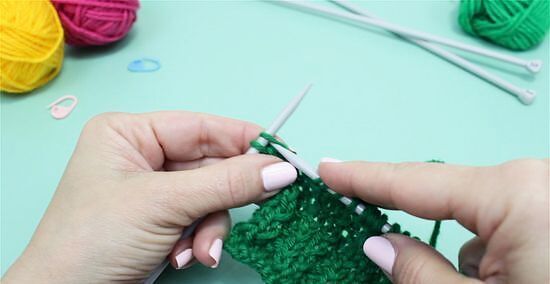
Learning curve Which craft you find easier typically depends on your personal learning style and the other skills you bring to the table. Generally, most people find crochet a bit easier than knitting—but it's also true that there are people who just take to knitting and find crochet more difficult. Choose crochet if you're creative and prefer to hit the ground running on something and see where it goes. You like to go with the flow and aren't afraid to make mistakes. Choose knitting if you're more logical and prefer specific and precise instructions. You want a project with boundaries and a formula to follow that's already laid out for you.
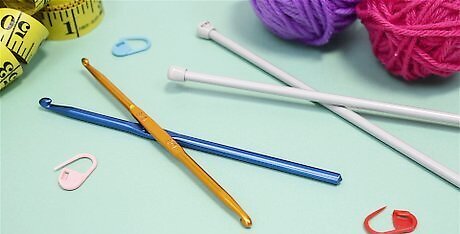
Starting cost Crochet definitely requires a smaller initial investment than knitting, particularly if you've never tried another sewing craft before. Both crafts require a tape measure or small ruler, scissors, and stitch markers. But to knit, you'll usually want to start with a set of knitting needles, which could set you back around $50 US. For crochet? A single hook (around $10 US or less) will do. Choose crochet if you don't have a lot of money to invest in the craft to get started and you're ready to get going right away. Choose knitting if you have a little more money to invest and don't mind buying some tools that you're not going to understand how to use at first.

Cost per project A crochet project, on average, uses about 30% more yarn than a knitting project of the exact same size. This means that after you've got all of your tools, you can generally expect crochet to be a more expensive hobby than knitting. Of course, a lot goes into this, including the average size of your projects and the quality of yarn you use. Choose crochet if you're less worried about the cost per project, or only plan on doing smaller projects. Choose knitting if you want to do larger projects and have a limited budget.

Manual dexterity required Knitting requires holding knitting needles in both of your hands and moving them simultaneously. Since crochet only uses one hook in one hand, it requires a little less dexterity than knitting. Choose crochet if your hands aren't used to working together in a coordinated way, or if you have arthritis or another hand condition that limits your dexterity. Choose knitting if you have good manual dexterity and fine motor skills and don't have any condition that limits the mobility in your wrists and hands.
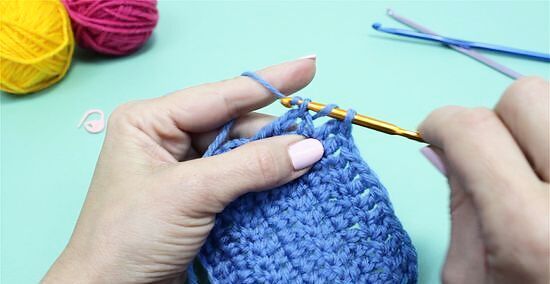
Speed of completion Because the stitches are larger and less complex, crochet projects tend to go faster than knitting projects. When you're first getting started, you'll likely find that you can create something useful more quickly with crochet than with knitting. Choose crochet if you only have short periods to work and want to complete projects quickly. Choose knitting if you have more time to spend on a project and want a more polished finished product.
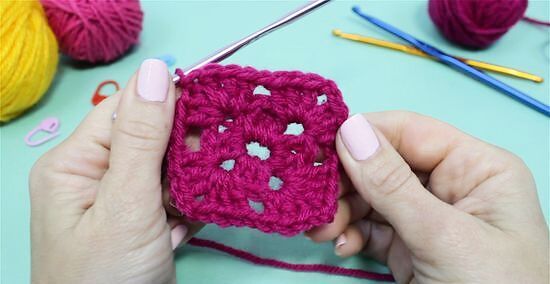
Ease at fixing mistakes Knitting requires you to constantly keep count of your stitches and going back and picking one up that you dropped can be time-consuming. With crochet, mistakes are more easily fixed—but even if you don't, they'll usually be hard to notice in the finished product. Choose crochet if you want a craft that's more forgiving of errors and makes it easy to correct a mistake that you see later. Choose knitting if you're more of a perfectionist and aren't worried about making a mistake that you don't notice until several rows later, when it will be more difficult to fix.
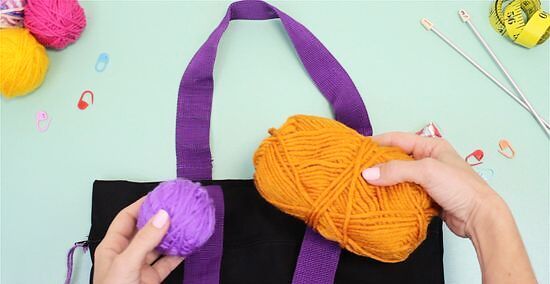
Portability Because of the number of live stitches and the multiple tools, knitting is much less portable than crochet. Crochet projects also tend to be smaller than knitting projects, so you don't have to take large amounts of finished work with you. Choose crochet if you want something to occupy your hands that you can take to events or do in small doses while you're waiting. Choose knitting if you plan on crafting mostly at home and don't anticipate taking your work with you anywhere to pass the time or occupy your hands.
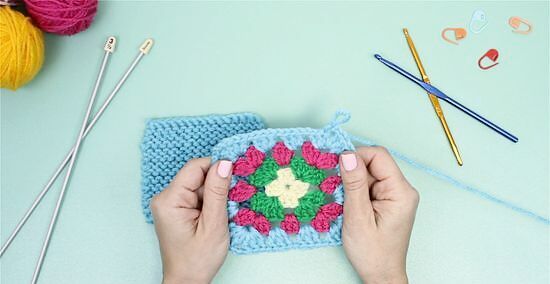
Types of projects Crochet tends to produce a stiffer fabric that's harder to fit if you're making garments. In contrast, knitting produces a soft and drapable fabric that's much more difficult to fix into specific shapes and forms. Choose crochet if you want to work with projects that have more structure—3D objects, such as toys, or household objects, such as potholders. Choose knitting if you want to make garments and soft, smooth blankets and other fabric items that move and flow.
Getting Started with Knitting
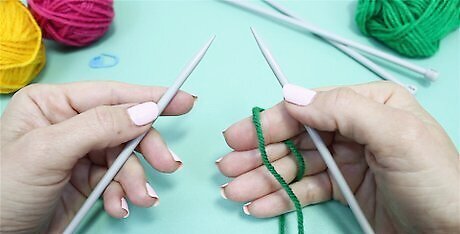
Pick up a pair of knitting needles and a ball of yarn. Hold one knitting needle in each hand. Hold them between your thumb and first finger like pencils, so they're resting in the crook of your thumb. Some people also hold them with their first finger on top of the needle, so that their hands are on top of the needle itself, which rests between their thumb and middle finger. Play around with this until you find what's comfortable for you. You'll need to hold the yarn in one of your hands—play around until you get a sense of which way you want to do this. You'll wrap it around the fingers of one of your hands—most people use their right hand for this. Wrap the yarn around your pinkie, under your fourth and middle fingers, then over your first finger. Some people wrap it under their fourth finger, over their middle finger, and under their first finger.
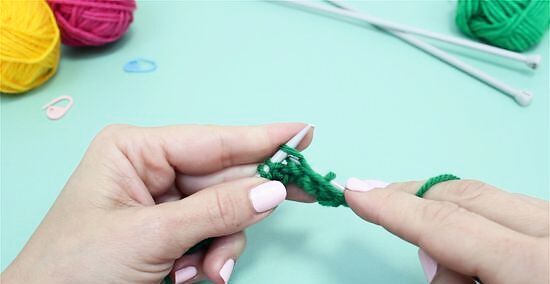
Create a slip knot on one needle, then "cast on" a row of stitches. Start with the knit stitch, which is the most basic knitting stitch. About 22 stitches are good for practice and will get you started with a good-sized square sample of fabric. Once you're comfortable with the knit stitch, try the purl stitch. Together, these 2 stitches are the foundation of any other knitting stitch, so you'll use them in everything you make.

Choose a small, beginner's knit and purl pattern. When you first look at a pattern, it can be pretty intimidating—but the abbreviations are there to make it clearer. Look for a pattern with Ks (knits) and Ps (purls), since those are the stitches you know. The number after the letter tells you how many of that type of stitch to do. Now, all you have to do is follow the formula and knit! You can find plenty of free patterns online to get started. They're usually labeled with the level of difficulty so you won't get in over your head. Try Ravelry—it's an online community of yarn crafters with hundreds of thousands of knitting patterns to choose from. Patterns are usually written with a specific type of yarn in mind. If you can't find that specific type, talk to someone at a yarn or crafting store—they might be able to suggest an alternative that would work for your project.
Getting Started with Crochet
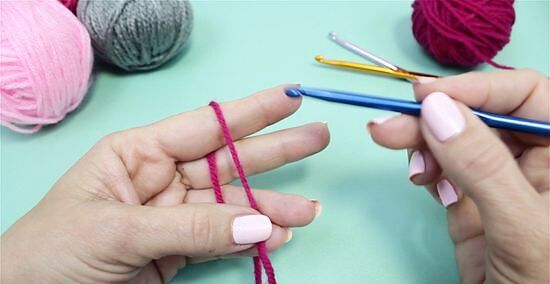
Hold your crochet hook in your dominant hand like a pencil. Most people hold the hook in their right hand and the yarn in their left. Hold the yarn tight enough to keep the tension on the yarn, but loose enough that it can still slide through your fingers while you crochet. It takes some practice to keep the tension right, but you'll get it! Run the yarn over your pinkie, under your third and middle fingers, then over your index finger. If you need more tension, loop the yarn once around your pinkie before you pass it under your third and middle fingers.
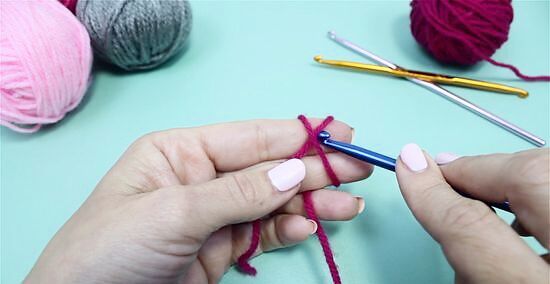
Cast your yarn onto your hook with a slip knot. Pull about 6 inches (15 cm) of yarn loose from the yarn ball, then cross the ball over and on top of the tail-end of the yarn to make a loop. Insert your crochet hook into the loop, then use the hooked end to grab the ball end of the yarn and pull it through the loop. Now you have your slip knot. Just pull on both ends of the yarn to tighten the loop.
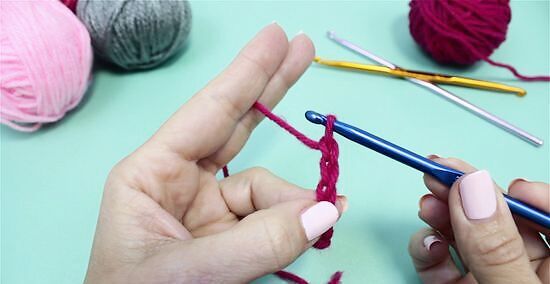
Create a row with the chain stitch. Hold the hook in one hand and both ends of the yarn in the other. Move the hook over and under the yarn so that it wraps around the back of the hook counterclockwise. Now, catch the yarn in the hook again and pull it through the slipknot loop to make your first chain stitch. The chain stitch is the starting point for any crochet project, so if you can get this down, you're well on your way to making a scarf, hat, or amigurumi figure. When you've finished a sample, remember to bind off the stitches so it doesn't come unraveled.
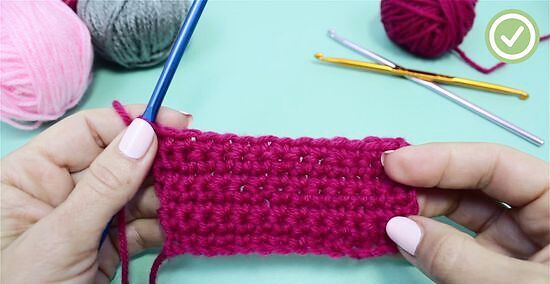
Choose a single crochet stitch pattern for your first project. You don't really need a specific pattern to start crocheting—you can jump right in with a chain stitch and figure out what you're making as it comes to you. But once you get comfortable and decide you want to do something specific, search online for your next free pattern. Many of these patterns also come with video tutorials that make it easy to follow along. Ravelry has lots of free beginner crochet patterns you can try, so that could be a good place to start. There are a lot more crochet stitches to learn as you progress, but as long as you can make a chain stitch, you'll be able to complete the most basic beginner patterns. Patterns are always marked with a level of difficulty, so make sure you're choosing one that's not too hard for you to do. You don't want to get frustrated, especially when you're just learning!













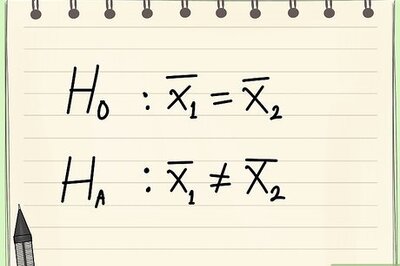
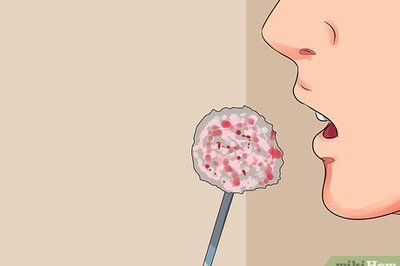





Comments
0 comment